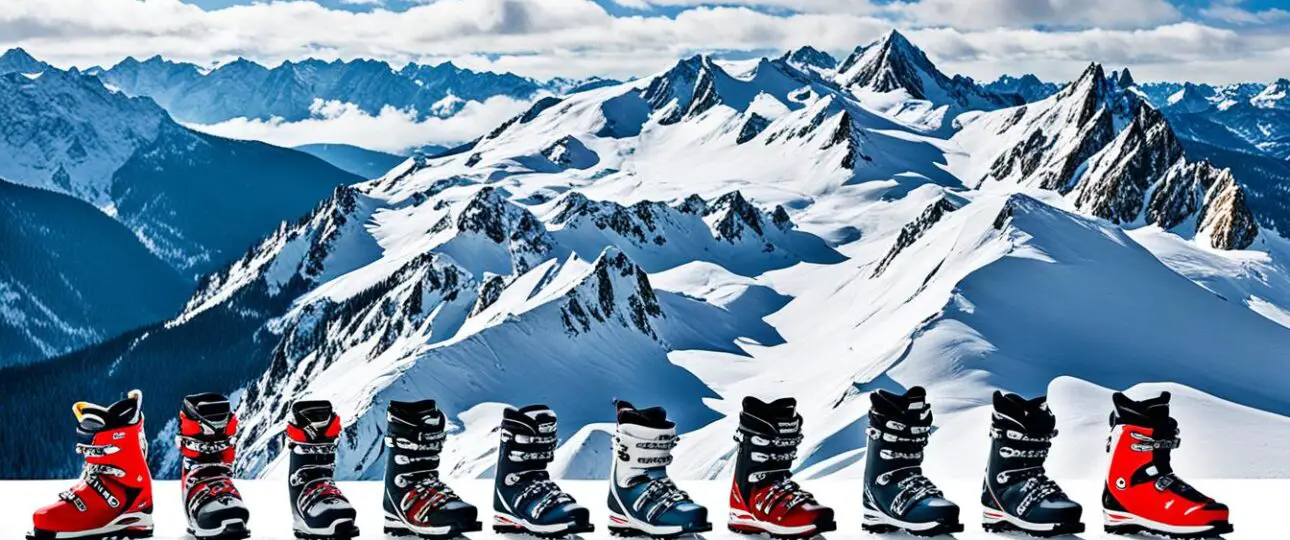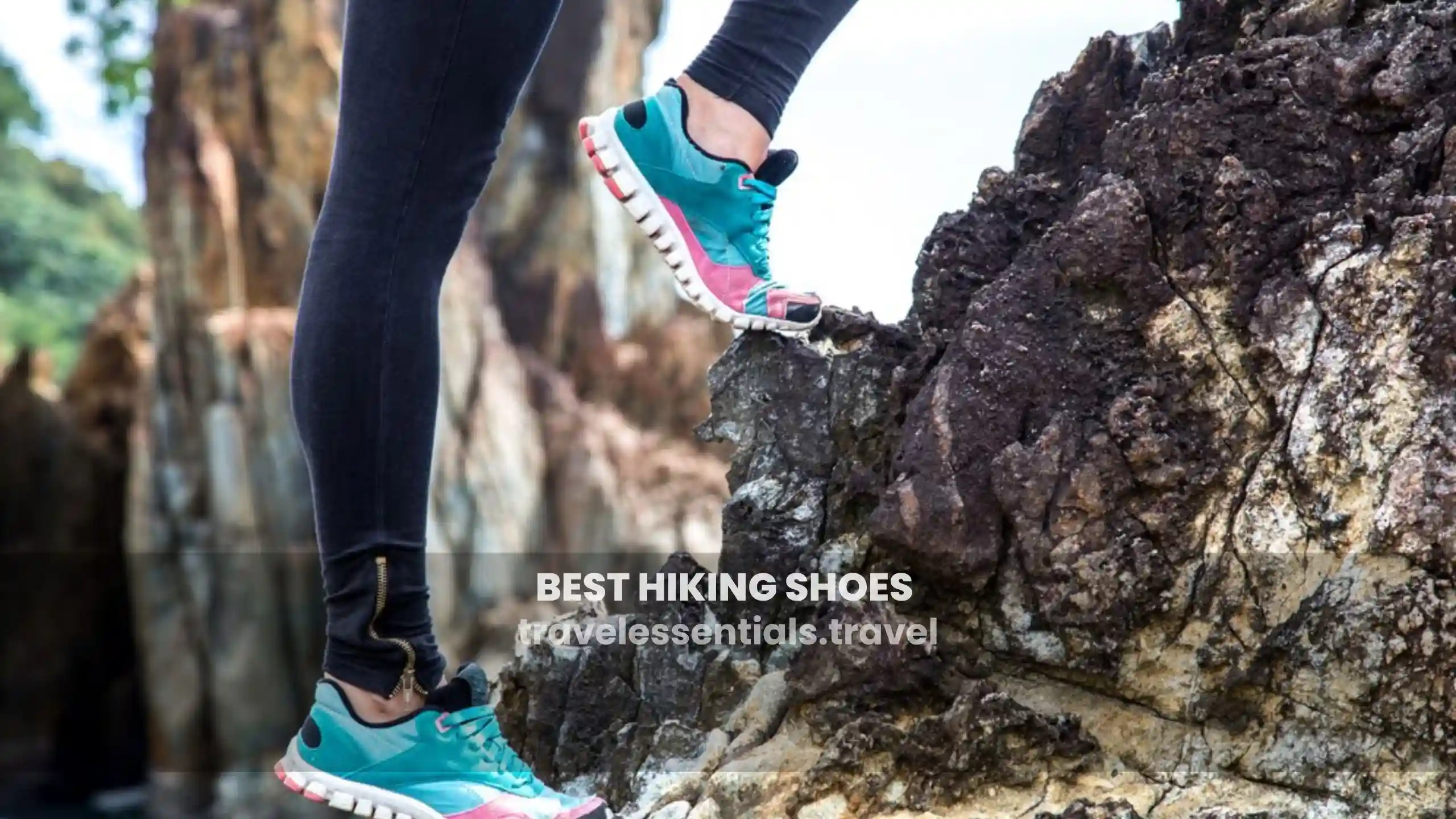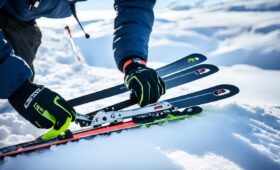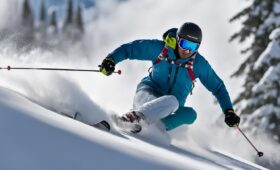Picture this: you’re standing at the top of a beautiful snow-covered mountain, ready to embark on a thrilling ski adventure. The crisp mountain air fills your lungs as you take in the breathtaking views. But as soon as you start gliding down the slopes, you realize that something is off. Your ski boots are pinching your toes, causing discomfort with every turn. Your focus shifts from enjoying the exhilarating ride to surviving the pain in your feet.
Don’t let ill-fitting ski boots ruin your snow-filled escapades. The key to an enjoyable and successful skiing experience lies in finding the perfect fit for your ski boots. Understanding how ski boots should fit is essential for control, comfort, and ultimately, your overall performance on the slopes.
Whether you’re a seasoned skier or a first-timer, getting the right fit for your ski boots is crucial. There are several factors to consider, from ski boot sizing to different features that enhance comfort and performance. In this comprehensive ski boot fitting guide, we’ll explore everything you need to know to ensure your ski boots fit perfectly.
Key Takeaways:
- Proper ski boot fit is essential for control and performance on the slopes.
- Consider factors such as skier type, size, last/width, volume, instep height, flex/stiffness, and features when choosing ski boots.
- Beginner and intermediate skiers should opt for softer to medium flexing boots for comfort, while advanced skiers may prefer a stiffer flex for better control.
- The last or width of the ski boot should match your foot shape, ensuring a snug fit.
- Your ski boots should feel snug, without painful pressure points, and secure in the heel, instep, and ball of the foot.
Skier Type and Size
Determining the perfect fit for your ski boots involves considering your skier type and size. Whether you’re a beginner, intermediate, or advanced skier, finding boots that cater to your level of experience is crucial for a comfortable and controlled skiing experience.
Beginner Ski Boots
Beginner skiers should look for ski boots with softer to medium flex ratings. These boots provide more forgiveness and comfort, making it easier for newcomers to learn and enjoy their time on the slopes. Opting for beginner ski boots will help you build confidence and progress your skills at your own pace.
Intermediate Ski Boots
Intermediate skiers, who have gained some experience and are looking to advance their skills, should consider boots with a slightly stiffer flex. These boots offer better responsiveness and control while still providing a good level of comfort. Intermediate ski boots will allow you to tackle more challenging terrain with confidence.
Advanced Ski Boots
Advanced skiers who crave speed, precision, and total control on the slopes should opt for ski boots with a stiffer flex rating. These boots provide maximum responsiveness and power transfer, allowing advanced skiers to push their limits and conquer even the most demanding terrain. Stiffer boots offer enhanced performance and stability at high speeds and aggressive turns.
To ensure the proper fit, it’s essential to determine the correct ski boot size. You can use a ski boot size chart or follow the Mondopoint measurement scale, which measures foot length in centimeters, to find the perfect size for your boots. Remember, a proper fit is essential for comfort, control, and performance while skiing.
Ski Boot Size Chart
| US Shoe Size | EU Shoe Size | Mondopoint Size (cm) |
|---|---|---|
| 4 | 35 | 22 |
| 5 | 36 | 23 |
| 6 | 37 | 24 |
| 7 | 38 | 25 |
| 8 | 39 | 26 |
| 9 | 40 | 27 |
Referencing the ski boot size chart or using the Mondopoint scale will help you determine the right size for your ski boots. However, keep in mind that sizes can vary between different boot brands, so it’s always a good idea to consult the specific size guide provided by the manufacturer.
Last/Width and Volume & Instep Height
In order to achieve a proper fit, the last or width of a ski boot is an important consideration. The last refers to the width of the boot’s forefoot area. Narrow-lasted boots are designed for individuals with narrow and low volume feet, providing a more snug fit. On the other hand, average-lasted boots are suitable for most skiers.
When selecting ski boots, it’s important to choose a boot with a forefoot width that matches your foot shape. This will ensure a comfortable and secure fit while skiing. A ski boot that is too narrow can cause uncomfortable pressure points, while a boot that is too wide may result in a lack of control and stability.
Volume and Instep Height
In addition to the last/width, considering the volume and instep height of a ski boot is crucial for achieving optimal fit and comfort. The volume refers to the overall space within the boot, particularly around the ankle and calf area. Some individuals may have a higher volume foot, requiring boots with more space in this area.
Similarly, the instep height, which is the height of the foot from the sole to the top, can vary among skiers. Those with a higher instep may require boots that offer more vertical space to accommodate the shape of their foot.
It’s important to try on different ski boots to find the right combination of last/width, volume, and instep height that suits your feet. Consulting with a professional bootfitter will also help ensure that you choose the best ski boot for your specific foot shape and skiing style.
| Narrow Ski Boots | Wide Ski Boots | |
|---|---|---|
| Last/Width | Narrow | Wide |
| Volume | Lower | Higher |
| Instep Height | Lower | Higher |
Flex/Stiffness and Features
The flex or stiffness of a ski boot plays a crucial role in its performance and responsiveness on the slopes. Choosing the right flex for your skiing ability level is essential to optimize your experience.
For beginner and intermediate skiers, opting for a softer to medium flex is recommended. This flex range provides more comfort and forgiveness, allowing for easier control and maneuverability. A softer flex is also ideal for skiers who enjoy cruising down groomed runs or are still developing their techniques.
John, a beginner skier, shares his experience, “I started with a ski boot featuring a softer flex, and it really helped me gain confidence on the slopes. I felt more in control, especially when practicing turns and stopping.”
Advanced and expert skiers, on the other hand, may prefer a stiffer flex. A stiffer boot offers increased power transmission and precision, allowing for quick and aggressive turns at higher speeds. Skiers who frequently tackle challenging terrain, like moguls or steep slopes, benefit from the improved responsiveness of a stiffer flex.
Susan, an experienced skier, attests to the advantages of a stiffer flex. “I switched to a ski boot with a stiffer flex, and it made a world of difference in my performance. I could carve turns with greater precision and handle more demanding terrain without sacrificing control.”
In addition to flex, ski boots often come with various features that can enhance comfort and performance on the mountain. Customizable liners are a popular choice among skiers as they allow for a personalized fit. These liners can be heat-molded to contour to the shape of your foot, providing a snug and comfortable feel.
Adjustable buckles are another valuable feature. They enable skiers to fine-tune the fit of their boots by tightening or loosening the buckles as needed. This customization ensures a secure and precise fit, maximizing energy transfer and control.
“The customizable liners in my ski boots have made a tremendous difference in my comfort,” says James, an avid skier. “They mold perfectly to the contours of my feet, eliminating any discomfort or pressure points.”
Summary
When selecting ski boots, take into account the appropriate level of flex based on your skill level. Beginner and intermediate skiers benefit from softer to medium flex, providing comfort and forgiveness, while advanced and expert skiers may prefer a stiffer flex to enhance control and responsiveness. Additionally, consider features such as customizable liners and adjustable buckles to further tailor your boots to your needs and improve overall comfort and performance.
| Flex Level | Recommended Skier Level | Advantages |
|---|---|---|
| Soft to Medium Flex | Beginner and Intermediate Skiers |
|
| Stiffer Flex | Advanced and Expert Skiers |
|
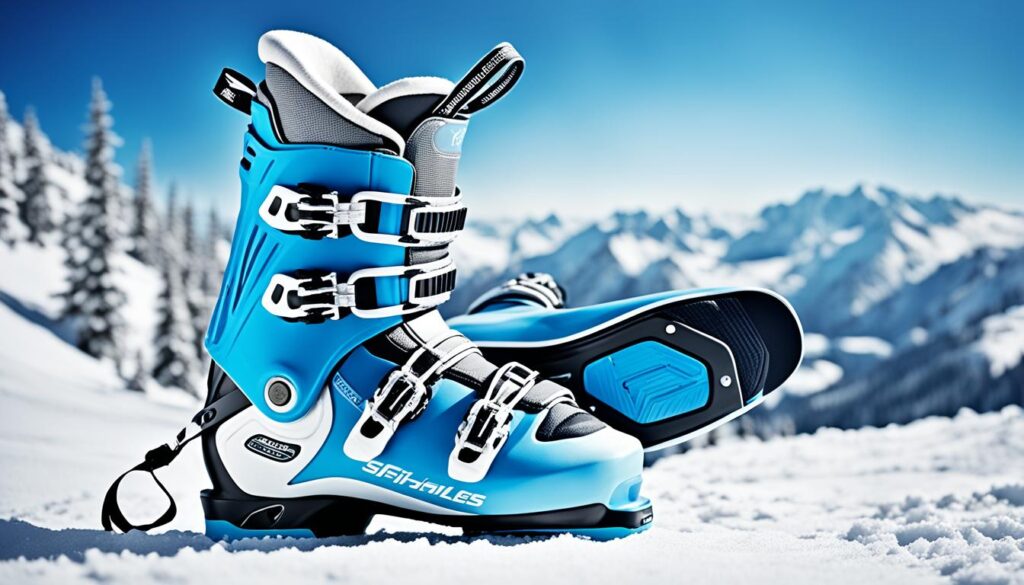
How Should Ski Boots Fit?
Properly fitting ski boots are essential for comfort and performance on the slopes. When it comes to finding the right fit, there are a few key factors to consider.
Snug Fit without Discomfort
Ski boots should fit snugly around your feet and ankles, providing support and control. However, they shouldn’t be so tight that they cut off circulation or cause painful pressure points. It’s normal for boots to feel slightly tight initially, but they will loosen up after a few days of skiing.
Secure Toes, Heels, and Instep
When you buckle your ski boots, your toes should have a slight amount of pressure against the front of the boot. This ensures proper control and responsiveness. Your heel should feel secure and not lift up while skiing, while the ball of your foot and the instep should also feel secure and well-supported.
Thin Socks and Professional Guidance
Wearing thin ski socks can help ensure a better fit by minimizing extra padding. Thick socks can create an overly snug fit and lead to discomfort. Additionally, it’s always a good idea to consult with a professional bootfitter for personalized guidance and adjustments if you’re experiencing fit problems.
| Common Ski Boot Fit Problems | Solutions |
|---|---|
| Too tight in the calves | Choose boots with adjustable buckles or consult a bootfitter for calf adjustment options. |
| Painful pressure points | Work with a bootfitter to customize the fit and alleviate any pressure points. |
| Heel lift or movement | Consider using a bootfitting insert or consulting with a bootfitter to address heel fit issues. |
| Toes touching or slamming into the front of the boot | Ensure you have proper boot sizing and consult a bootfitter for adjustments. |
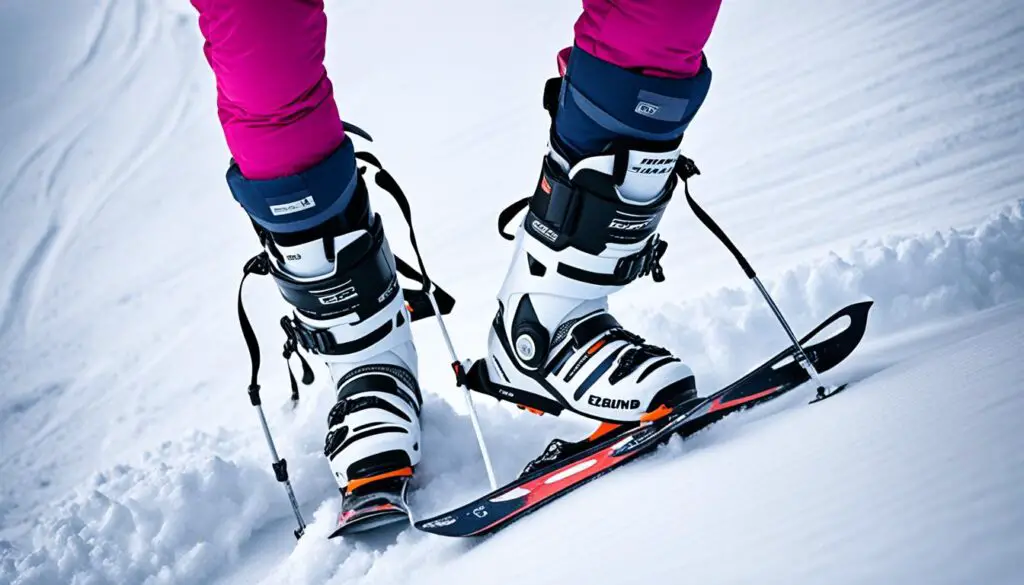
Remember, finding the perfect fit may require some trial and error, but it’s worth the effort for a comfortable and enjoyable skiing experience.
Conclusion
Achieving the proper fit for your ski boots is essential for a comfortable and successful skiing experience. By considering various factors such as skier type, size, last/width, volume, instep height, flex/stiffness, and features, you can find the right ski boot size and ensure maximum control on the slopes.
It’s important to remember that ski boots are not meant to be as comfortable as street shoes. They should fit snugly without causing painful pressure points or restricting circulation. While your boots may feel tight initially, they will eventually mold to the shape of your feet and offer improved comfort.
To find the perfect fit, it’s recommended to consult with a professional bootfitter who can provide personalized guidance and make necessary adjustments. Their expertise and experience are invaluable in achieving the ideal fit for your ski boots. With the right fit, you’ll be able to enjoy optimal control, performance, and comfort during your skiing adventures. Happy skiing!
